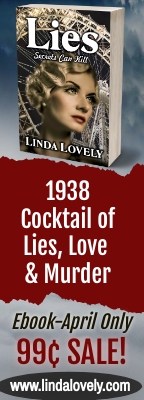by Margaret Mendel
There is a coupon for the Reedley Sandwich Shop at the end of this article.
Peter, Peter, Pumpkin Eater,
Had a wife and couldn’t keep her.
He put her in a pumpkin shell,
And there he kept her very well.
For years I recited this silly rhyme, having no idea what it meant and not thinking too much about it until this last week when I began research for this article. I had always thought it was one of Brothers Grimm’s inventions from the mid 1800’s. But as it turns out it was a rhyme that originated in America.
The interpretations that I’ve read regarding this simple four line poem, if indeed there is a valid interpretation, varies from it being a silly limerick concerning Russia’s Peter the Great imprisoning his sister and wife, to perhaps a man who fastened a chastity belt to an unfaithful wife. And then there is a tale told of a man who offed the head of his first wife, stuffing it into a rather large pumpkin, and then proceeded to take on a second wife.
Pumpkins frequently appear in literature, too, and here are just a few instances. There is of course, Cinderella and her grand pumpkin carriage. For many years Charles M. Schulz delighted us with his Peanuts cartoon strip and Linus’ belief in the Great Pumpkin. There is the pumpkin throwing Headless Horseman in Washington Irving’s The Legend of Sleepy Hallow. And most recently pumpkins have appeared in the Harry Potter books and movies where the students of Hogwart’s School of Witchcraft and Wizardry partake of a favorite beverage, pumpkin juice.
Pumpkin, Pumpkin, Where Did You Come From?
It is believed that pumpkins originated in North America with evidence of pumpkin-related seeds discovered in Mexico that date between 7000 and 5500 BC.
If we trust our history books, it would seem that Columbus carried back to Europe seeds from every interesting plant that he encountered. And pumpkin seeds were among his bounty. Yet, rather than eating this new food, the Europeans fed the harvests of pumpkins to their pigs.
Though pumpkins were an important food to the indigenous people of this ‘newly found world’ the settlers in the Plymouth Colony were not impressed with this strange addition to their diet until they realized how well a pumpkin lasts when stored properly. And though the Pilgrims were not able to articulate the nutritional value of the pumpkin, once introduced into the Colony’s diet the pumpkin helped to prevent scurvy and other vitamin deficiency related ailments. Pumpkins, as it turns out, are low in calories and sodium, but high in fiber. The pumpkin is also rich in beta-carotene, an antioxidant that converts into Vitamin A, and the seeds contain a high amount of protein, iron and B vitamins.
What Is The Difference Between Pumpkin, Squash And Gourd?
There are hundreds of different varieties and subgroups of pumpkins and squash and gourds, and it seems that these terms are interchangeable. However, a general rule is this: pumpkins are usually something you carve; a squash is something you cook; and a gourd is something used for ornamentation.
The Jack-O-Lantern
The commercial leader and the best pumpkin for making a Jack-0-Lantern is the Wowden variety of pumpkin that typically weighs between 20 and 60 pounds. It has a firm stem, smooth skin with fewer ridges than other pumpkins, and generally it is an agreeable size and shape. Some people use these pumpkins for cooking though they are probably the least favorable for eating.
Jack O’Lanterns have been around for centuries and originated from the Irish myth about a man nicknamed “Stingy Jack”. Twice Jack tricked the devil into agreeing not to take his life and not to take him to Hell. When Stingy Jack died, as all good and bad men do, St. Peter denied him admittance into heaven because of his sinful lifestyle of deceitfulness and drinking. Jack had no choice then but to seek entrance into Hell. But the Devil kept his bargain and refused Jack’s entrance into Hell. Jack was now condemned to roam the Netherland with only a burning ember inserted into a hallowed-out turnip to light his path. The Irish referred to this ghostly fellow as ‘Jack of the Lantern’ that eventually became known as Jack O’Lantern.
There grew up a tradition in Ireland and Scotland of carved scary faces in hollowed-out turnips and potatoes that were then placed in windows and doors to frighten away Stingy Jack and other evil spirits. Immigrants continued this tradition when they came to America and found that the pumpkin made perfect Jack O’Lanterns.
Pumpkin Sports And Weigh-Offs
Pumpkin Chucking, a competitive sport of throwing, tossing and hurling large tough skinned pumpkins long distances by using mechanical devices originated in Delaware in1986. It is a sport that requires lots of space. The longest distance a pumpkin has been chucked was 4,483.65 feet, a record that was set in 2008.
Every year there are Giant Pumpkin Weigh-Offs held throughout the USA. The Atlantic Giant a type of Hubbard squash is most typically seen at the scale. These hefty beauties can weigh over a thousand pounds and the record holder an Atlantic Giant pumpkin that weighed in at 1,810-pound.
How To Cook A Pumpkin
(Though I could use the term ‘squash’ rather than ‘pumpkin’ in this next section, I have decided to use the term pumpkin.)
Most parts of the pumpkin are edible. The fleshy shell, the leaves and even the seeds can be eaten. The seeds typically roasted, are consumed as a snack, added to cereal or desserts. The flesh of a pumpkin is used in both sweet and savory dishes, in soups and stir-fries. In China the leaves are added to soups and in Thailand small pumpkins are steamed with custard inside and served for dessert. The Italians combine pureed pumpkin with cheese to make a savory stuffing for ravioli. Pumpkin blossoms are delicious dipped in a batter and deep fried, or stuffed with cheese and roasted.
A Brief History of The Pumpkin Pie
Forget the staged paintings and drawings you’ve seen of women in the early days in the Plymouth Colony with clean white aprons bringing a classic pumpkin pie in a pastry shell to a table full of eager diners. In the first place there were no ovens in the early days of the colony. The first pumpkin pie was most likely a hollowed out pumpkin filled with milk, honey and spices that was then roasted in hot ashes and the pumpkin would have been brought to the table blackened and charred looking.
 Because the pumpkin was such a sturdy food source the cooks in early Colonial days were able to adapt it to savory as well as sweet dishes. Often Thyme, Rosemary, Parsley and Sweet Marjoram were used to favor the pumpkin as well as butter, raisins and sugar. Initially sliced apples were used instead of a pastry crust, but then in 1796 the first American cookbook was published, American Cookery, by an American Orphan by Amelia Simmons. In this book she has recipes for pumpkin puddings baked in a crust that are quite similar to our present day pumpkin pies.
Because the pumpkin was such a sturdy food source the cooks in early Colonial days were able to adapt it to savory as well as sweet dishes. Often Thyme, Rosemary, Parsley and Sweet Marjoram were used to favor the pumpkin as well as butter, raisins and sugar. Initially sliced apples were used instead of a pastry crust, but then in 1796 the first American cookbook was published, American Cookery, by an American Orphan by Amelia Simmons. In this book she has recipes for pumpkin puddings baked in a crust that are quite similar to our present day pumpkin pies.
The Best Ever Pumpkin Pie
To get the best pumpkin pie you first need a good pumpkin. This is what I do every year about this time. I purchase a ‘cheese pumpkin’ or ‘milk pumpkin’ at a farmer’s market. These pumpkins have a light creamy orange colored outer shell but have a nice deep pumpkin colored flesh that is denser than the standard pumpkins and this results in better custards. Also they are great for hearty stews and soups and they are rick in Beta Carotene.
I thoroughly wash and dry the pumpkin, then place it in a roasting pan with a lid and baked it for about 45 minutes in a 350-degree oven. I remove the pumpkin from the oven, let it cool and then scrape the flesh from the outer shell.
At this point the pumpkin meat can be either placed in a processor to break up the pieces pulse it into a soft puree. Or, a potato masher can be used to bring the pumpkin to a nice soft consistency. The smoother the textures the more pleasant the pumpkin pie will be. I then either bake a pumpkin pie that day using 1 3/4 cups of the puree, or store the pumpkin in freezer bags in 1 3/4-cup measures. And if I think I might make pumpkin muffins, I fill a freezer bag or two with 1-cup measures. These bags then go into the freezer and I pull them out when I’m ready to bake.
Pumpkin Pie
Pastry for a 9-inch one-crust pie (See details in making a good piecrust here in this KRL article.)
3 eggs, lightly beaten
¾ cup brown sugar, lightly packed
½ teaspoon salt
¾ teaspoon ground ginger
¼ teaspoon cinnamon
¼ teaspoon nutmeg
¼ teaspoon ground cloves
1 ¾ cups pumpkin (If you did not prepare your own pumpkin, canned will work well, too.)
1 ½ cups undiluted evaporated milk
Set rack near the bottom of the oven and turn oven on to 425 degrees.
1. Brush bottom and sides of the piecrust with a little of the beaten eggs, and then set it aside to chill in the refrigerator while preparing the pumpkin filling.
2. Mix the remaining ingredients into the beaten eggs.
3. Pour filling into prepared pie shell. Bake for about 35 minutes or until a knife inserted into the middle comes out clean.
This pumpkin filling mixture can also be prepared and cooked in a casserole dish without the piecrust and served as a pudding. A dollop of whipped cream on either the pie or the pudding and it is a wonderful end to any meal.
Why not treat yourself to a sandwich or cup of clam chowder before enjoying your Pumpkin PiePrint this coupon and take to the Reedley Sandwich Shop:
















I adore pumpkin pie and buy them from the local store and eat all the inside good stuff. Great article. tjs
Hello Margaret,
Thanks for the precious informations you deliver here on Pumpkin.
Best regards,
Nalo.